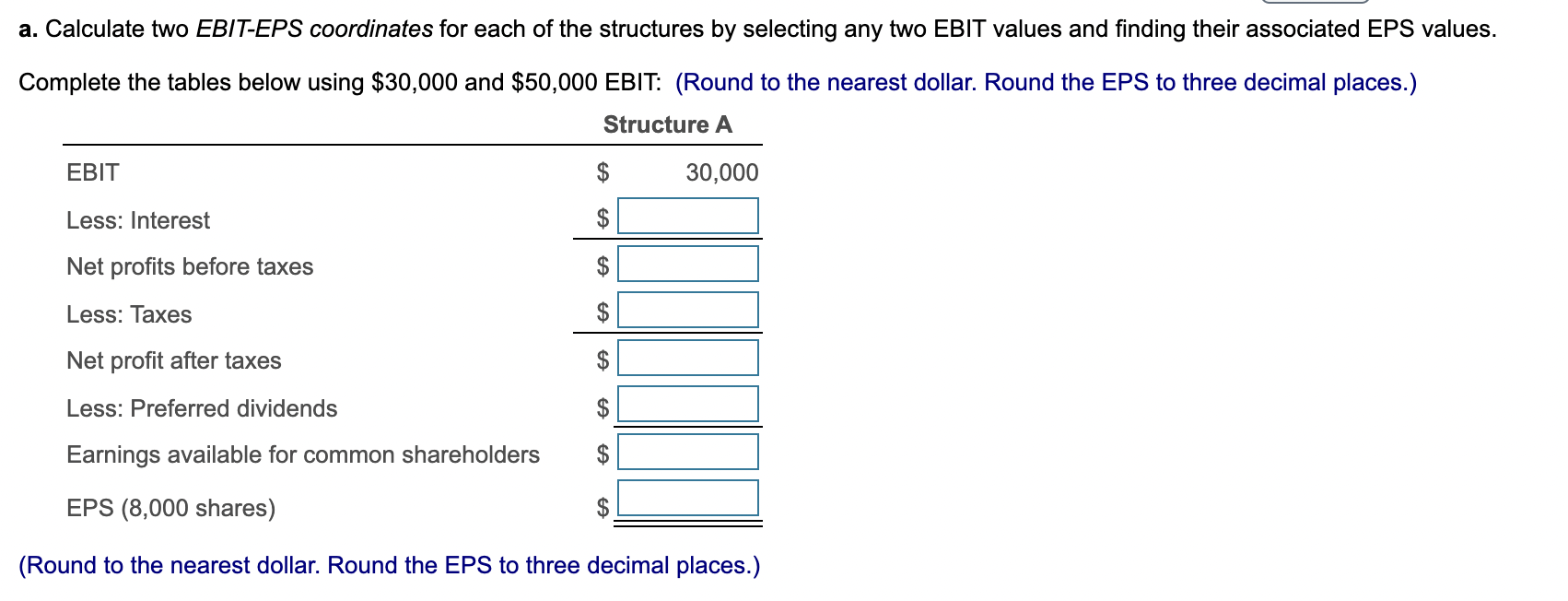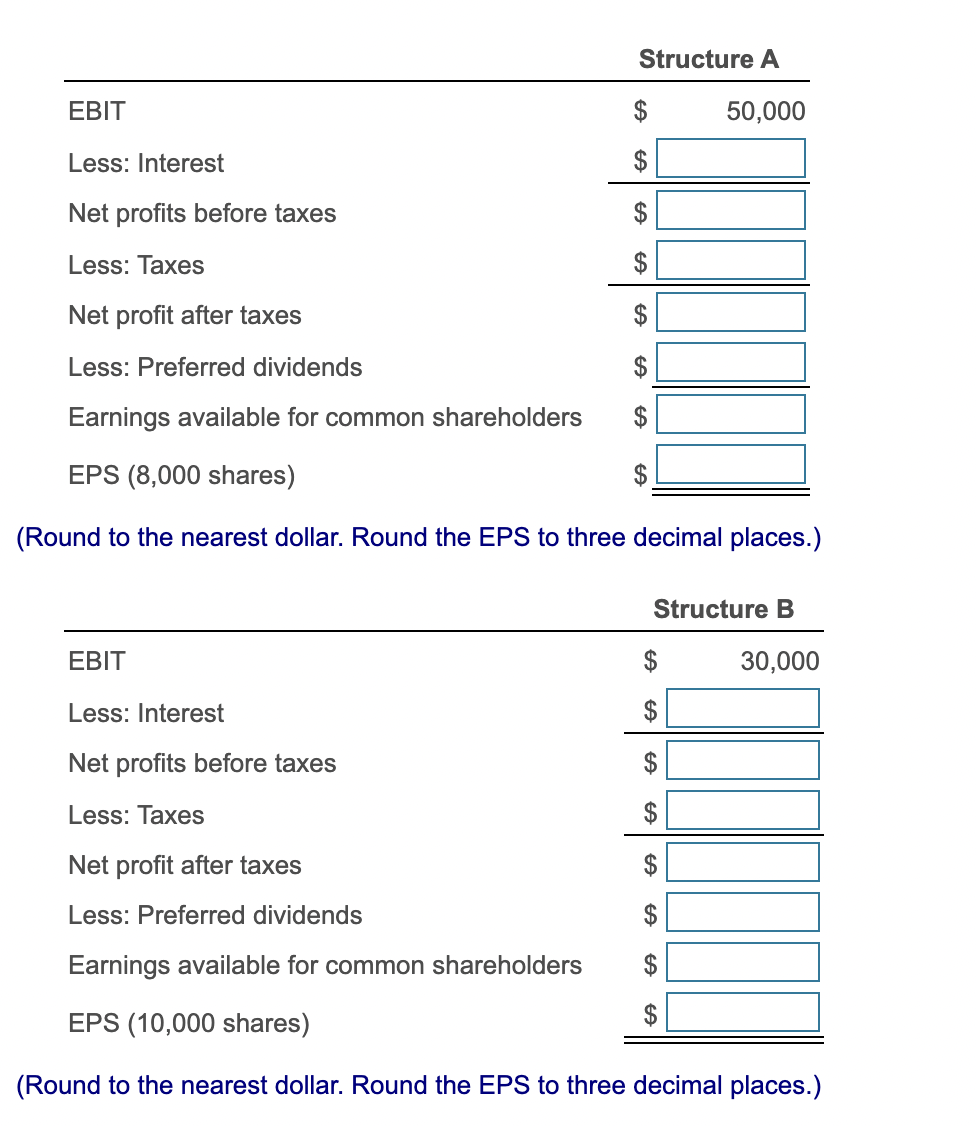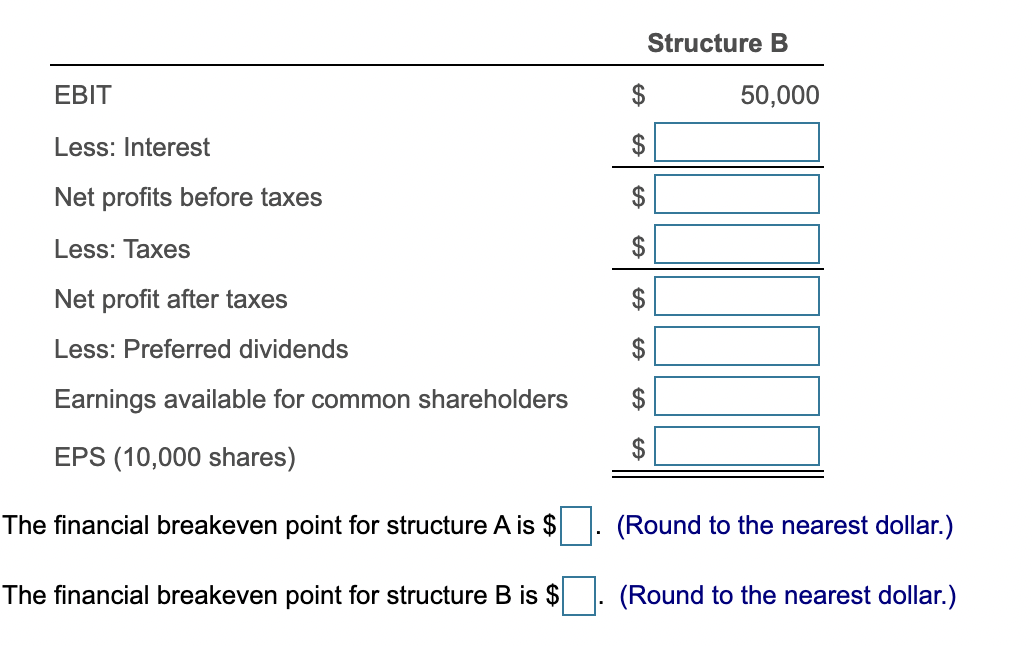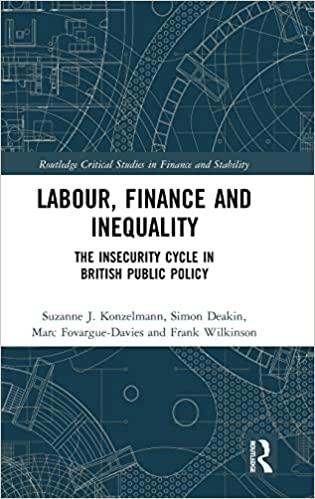




EBIT-EPS and preferred stock Litho-Print is considering two possible capital structures, A and B, shown in the following table. Assume a 40% tax rate. Source of capital Long-term debt Preferred stock Common stock Structure A Structure B $75,000 at 16.0% coupon rate $50,000 at 15.0% coupon rate $10,000 with an annual dividend of 18.0% $15,000 with an annual dividend of 18.0% 8,000 shares 10,000 shares a. Calculate two EBIT-EPS coordinates for each of the structures by selecting any two EBIT values and finding their associated EPS values. b. Graph the two capital structures on the same set of EBIT-EPS axes. c. Discuss the leverage and risk associated with each of the structures. d. Over what range of EBIT is each structure preferred? e. Which structure do you recommend if the firm expects its EBIT to be greater than $35,000? Explain. a. Calculate two EBIT-EPS coordinates for each of the structures by selecting any two EBIT values and finding their associated EPS values. Complete the tables below using $30,000 and $50,000 EBIT: (Round to the nearest dollar. Round the EPS to three decimal places.) Structure A EBIT $ 30,000 Less: Interest $ Net profits before taxes $ Less: Taxes $ $ Net profit after taxes Less: Preferred dividends $ Earnings available for common shareholders $ EPS (8,000 shares) $ (Round to the nearest dollar. Round the EPS to three decimal places.) Structure A EBIT $ 50,000 Less: Interest $ $ Net profits before taxes Less: Taxes TA Net profit after taxes $ Less: Preferred dividends Earnings available for common shareholders $ $ $ EPS (8,000 shares) (Round to the nearest dollar. Round the EPS to three decimal places.) Structure B EBIT $ 30,000 Less: Interest $ Net profits before taxes $ Less: Taxes $ Net profit after taxes $ Less: Preferred dividends $ Earnings available for common shareholders $ TA EPS (10,000 shares) $ (Round to the nearest dollar. Round the EPS to three decimal places.) Structure B EBIT $ 50,000 Less: Interest $ Net profits before taxes Less: Taxes $ $ $ Net profit after taxes Less: Preferred dividends $ Earnings available for common shareholders $ EPS (10,000 shares) $ The financial breakeven point for structure A is $ (Round to the nearest dollar.) The financial breakeven point for structure B is $ (Round to the nearest dollar.) c. Discuss the leverage and risk associated with each of the structures. (Select from the drop-down menus.) Structure has greater financial leverage, hence financial risk. d. Over what range of EBIT is each structure preferred? (Select from the drop-down menus.) If EBIT is expected to be below , Structure is preferred. If EBIT is expected to be above , Structure is preferred. e. Which structure do you recommend if the firm expects its EBIT to be greater than $35,000? Explain. (Select from the drop-down menu.) If EBIT is greater than $35,000, Structure is recommended since changes in EPS are much greater for given values of EBIT











